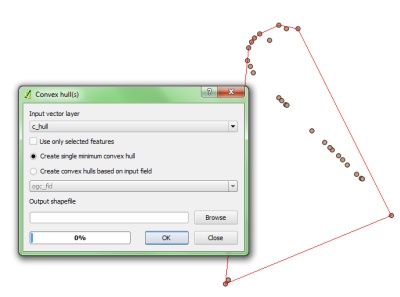Given a set of coordinates, How do we find the boundary coordinates.
 <== Figure 1
<== Figure 1
Given the coordinates in the above set, How can I get the coordinates on the red boundary. Boundary is the polygon which is formed by the input coordinates for vertices, in such a way that it maximizes the area.
I am working on an app which searches properties within 'x' miles of a city. What I have is:
- Coordinates of all the properties.
- A set of coordinates for each city (I have one coordinate for each zip. And since most cities have more than one zip, Every city has a set of coordinates)
The reason I am asking for the maximum area is so that I don't come up with a polygon like the one below:
 <== Figure 2
<== Figure 2
What I need is the algorithm to come up with the set of coordinates for the boundary. An algorithm which will allow me to come up with boundary coordinates for Figure 1.

